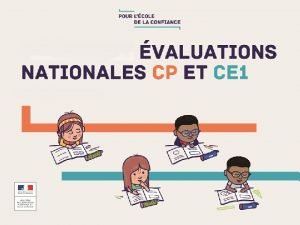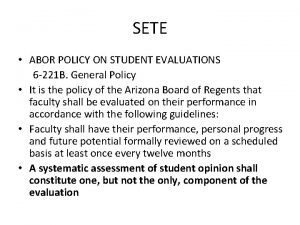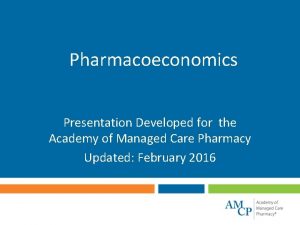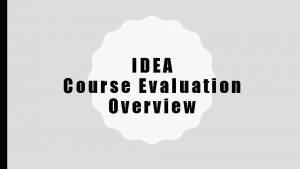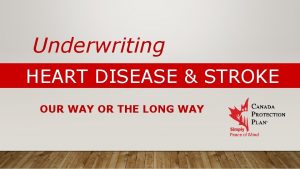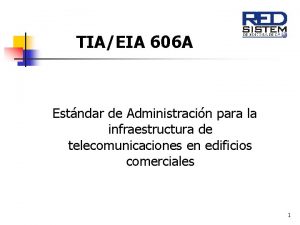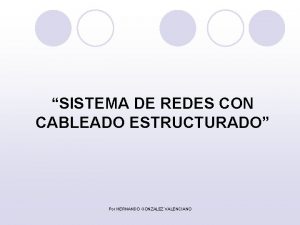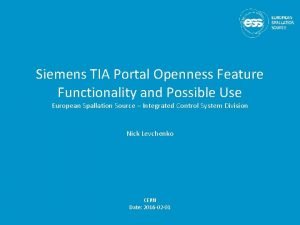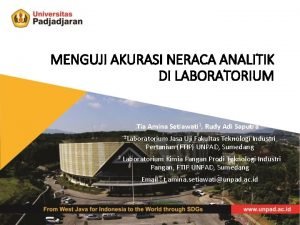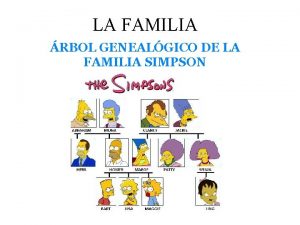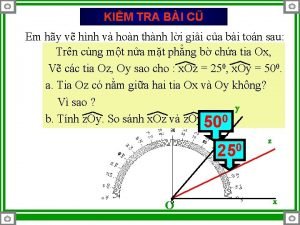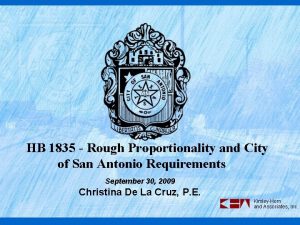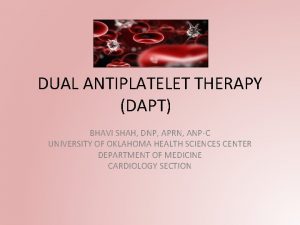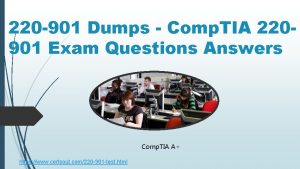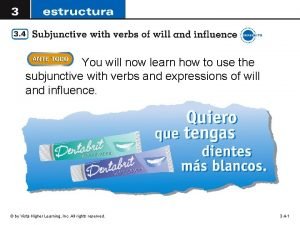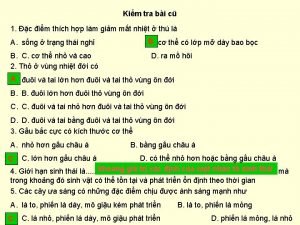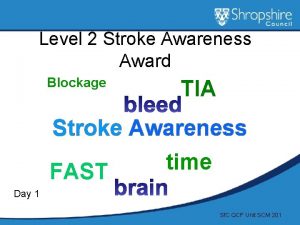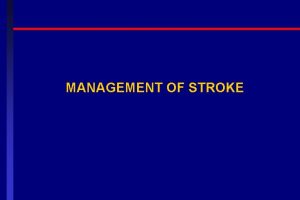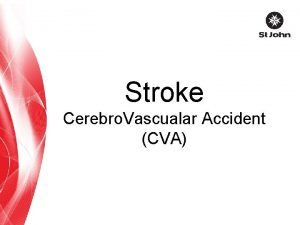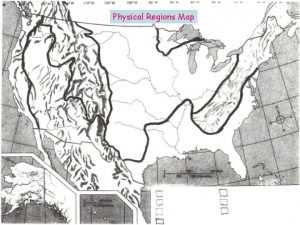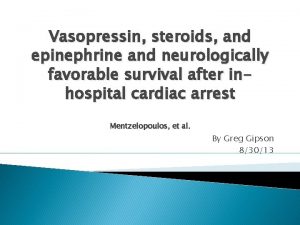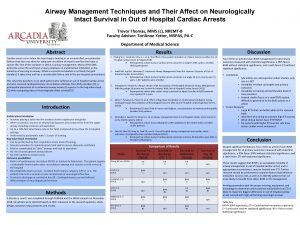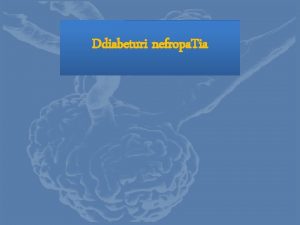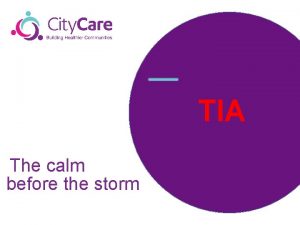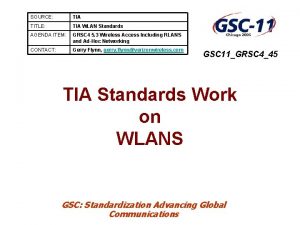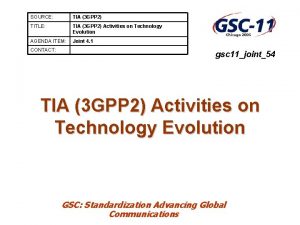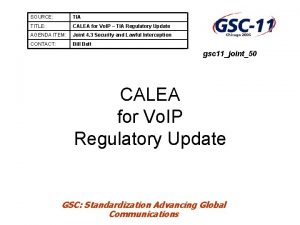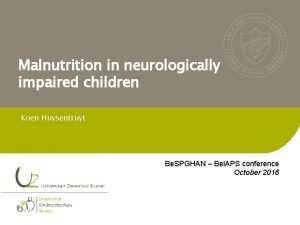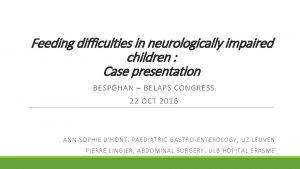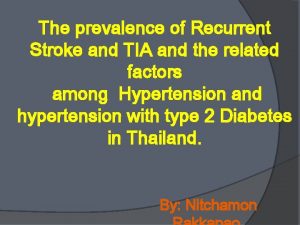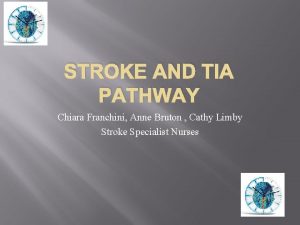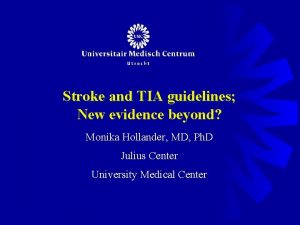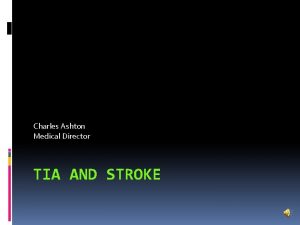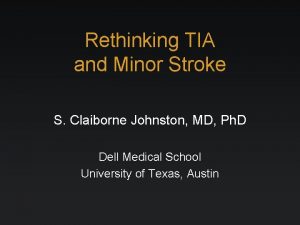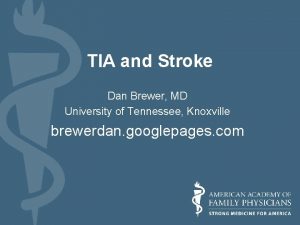Stroke and TIA Evaluations in Neurologically Underserved Regions
































- Slides: 32

Stroke and TIA Evaluations in Neurologically Underserved Regions Ganesh Asaithambi, MD John Nasseff Neuroscience Specialty Clinic 11/8/18

Disclosures No relevant financial or competing interests

Objectives • Discuss current burden of stroke and TIA • Review acute evaluations for patients presenting with acute stroke symptoms • Identify methods of evaluation for stroke and TIA patients for secondary prevention

What is a stroke?

What is a transient ischemic attack (TIA)?

Background 795, 000 people in US have a stroke each year A stroke occurs every 40 seconds in the US Every 4 minutes a stroke-related death occurs Women between ages of 45 -54 are twice as likely to have and die from a stroke than breast cancer • Fifth leading cause of death in US • Leading cause of disability • • Benjamin EJ et al. Circulation 2018; 137: e 67 -e 492.

The Basics: Types of Stroke Hemorrhagic Stroke (13%) Ischemic Stroke (87%) Large Vessel Disease Intracerebral Hemorrhage Cryptogenic Cardioembolism Subarachnoid Hemorrhage Small vessel disease Benjamin EJ et al. Circulation 2018; 137: e 67 -e 492.

Stroke in Minnesota (2016) • ~2. 5% of adults in Minnesota reported ever having had a stroke in their lifetime – More than 100, 000 people • More than 5% of all deaths in Minnesota are due to stroke (2, 197 deaths in 2016) – Fifth-leading cause of death in the state • More than 11, 000 hospitalizations for acute stroke events • Ranked 11 th lowest for overall stroke mortality among states and District of Columbia • From 2010 -2016, stroke death rate is 26% higher in African. Americans and Asians compared to whites Minnesota Department of Health

System of Stroke Care in Minnesota • As July 1, 2018 – 115 stroke hospitals • 91% of MN residents live within 30 minutes of a designated stroke center! Minnesota Department of Health

Transient Ischemic Attacks (TIAs) • • “Warning strokes” that can happen before a major stroke ~5 million Americans will experience a TIA Almost 10 times more likely to have a stroke Get a good history, rule out possible mimics – – – Seizure Hypo/hyperglycemia Migraine Conversion disorder/reaction Hypertensive encephalopathy Drug toxicity Benjamin EJ et al. Circulation 2018; 137: e 67 -e 492.

TIA Workup: Inpatient vs Outpatient • ABCD 2 score (0 -7) – Age ≥ 60 years (1) – Blood pressure (1) • Systolic ≥ 140 mm. Hg • Diastolic ≥ 90 mm. Hg – Clinical features • Unilateral weakness (2) • Speech impairment without weakness (1) – Duration • ≥ 60 minutes (2) • 10 -59 minutes (1) – Presence of diabetes mellitus (1) Johnston SC et al. Lancet 2007; 369: 283 -292.

TIA Workup: Inpatient vs Outpatient ABCD 2 score 2 -Day risk (%) 7 -Day risk (%) 90 -Day risk (%) 0 -3 1. 0 1. 2 3. 1 4 -5 4. 1 5. 9 9. 8 ≥ 6 8. 1 11. 7 17. 8 Johnston SC et al. Lancet 2007; 369: 283 -292.

But first…

Acute Ischemic Stroke Treatment Options • IV alteplase is recommended for selected patients who may be treated within 3 hours of onset of ischemic stroke (Class I Recommendation, Level of Evidence A) • IV alteplase should be administered to eligible patients who can be treated in the time period of 3 to 4. 5 hours after stroke (Class I Recommendation, Level of Evidence B) • Patients should receive mechanical thrombectomy …within 6 hours of symptom onset (Class I Recommendation, Level of Evidence A) if eligible • If eligible patients can receive mechanical thrombectomy – Between 6 and 16 hours of symptom onset (Class I Recommendation, Level of Evidence A) – Between 16 and 24 hours of symptom onset (Class I Recommendation, Level of Evidence B-R) Powers WJ et al. Stroke 2018; 49: e 46 -e 110

Acute Ischemic Stroke Treatment Options • Because time from onset of symptoms to treatment has such a powerful impact on outcomes, treatment with IV alteplase should not be delayed to monitor further improvement (Class III Recommendation, Level of Evidence C-EO) Powers WJ et al. Stroke 2018; 49: e 46 -e 110

Rural-Urban Inequity in IV alteplase From 2012 -2017: 103 rural hospitals IV alteplase use increased from 12. 9% to 15. 9% of all stroke patients (p=0. 0013) Gonzales S et al. Neurology 2017; 88: 441 -448 Tsai AW et al. Stroke. 2018; 49: AWP 276

Work Up for the Stroke/TIA Patient

Cranial Imaging • Computed tomography (CT) head – Hemorrhage? – Can be negative in the first few hours with increased sensitivity several hours later – Early CT signs of ischemia confers worse prognosis Wardlaw JM et al. Radiology 2005; 235: 444 -453.

Cranial Imaging • Magnetic Resonance Imaging (MRI) – More sensitive that CT – Not as generalizable • Do you need to transfer the patient?

Vessel Imaging • Carotid Dopplers • MRA/CTA – Extra- and intracranial vasculature • Digital subtracted angiography – Gold standard

Cardiac Imaging • Transthoracic Echocardiography – “Widely available” • Transesophageal Echocardiography – – – Aortic arch atherosclerosis Patent foramen ovale and/or atrial septum aneurysm Intracardiac tumor 3% Endocarditis Left atrial appendage thrombus Christiansen ME et al. Neurologist 2018; 23: 30 -33.

Immediate Anticoagulation • Arterial occlusion – why not? • When compared to aspirin or placebo – No evidence in superior prevention of stroke within 14 days – No significant difference in long-term outcome or independence – High risk of intracranial bleeding within 7 days – No variation across etiologies of stroke • Not recommended for treatment of patients with AIS (Class III Recommendation, Level of Evidence A) Berge E et al. Lancet 2000; 355: 1205 -1210. TOAST Investigators. JAMA 1998; 274: 702 -710. Bath PM et al. Lancet 2001; 358: 702 -710. Powers WJ et al. Stroke 2018; 49: e 46 -e 110

Antiplatelets for Noncardioembolic Strokes • FDA approval for secondary prevention of stroke/TIA – Aspirin (Class I; Level of Evidence A) – Aspirin/dipyridamole (Class I; Level of Evidence B) – Clopidogrel (Class IIa; Level of Evidence B) Kernan et al. Stroke 2014; 45: 2160 -2236.

Dual Antiplatelet (aspirin/clopidogrel) • Not beneficial in secondary risk prevention for non-acute events (if initiated within 3 or 6 months of stroke) • May be of benefit if started acutely (within 24 hours) for severe TIA or minor stroke – 21 days within Chinese population – 90 days in a more generalizable population • Intracranial severe stenosis (70 -99%) – 3 month therapy – Aggressive medical management • No net benefit when used > 1 year Diener HC et al. Lancet 2004; 364: 331 -337. Cote R et al. Neurology 2014; 82: 382 -389. Wang Y et al. N Engl J Med 2013; 369: 11 -19. Chimowitz M et al. N Engl J Med 2011; 365: 993 -1003. Zaidat OO et al. JAMA 2015; 313: 1240 -1248. Lee M et al. Ann Intern Med 2013; 159: 463 -470. Johnston SC et al. N Engl J Med 2018; 379: 215 -225.

Long-term Anticoagulation • Warfarin – Atrial fibrillation (Class I; Level of Evidence A) – Mechanical aortic or mitral valve (Class I; Level of Evidence B/C) – Intracardiac thrombus (Class I; Level of Evidence C) – Left ventricular assist device (Class IIa; Level of Evidence C) – Cardiomyopathy with ejection fraction < 35% (Class IIb; Level of Evidence B) – Rheumatic mitral valve disease (Class IIb; Level of Evidence C) Kernan et al. Stroke 2014; 45: 2160 -2236.

Direct Oral Anticoagulants • Nonvalvular atrial fibrillation – Apixaban – Rivaroxaban – Dabigatran – Edoxaban

Outpatient Arrhythmia Monitoring • Current duration of outpatient monitoring is undetermined – At least 24 hours upon admission for stroke • External monitors – 7 -, 14 -, 28 -, and 30 -day monitors • Insertable monitors – Up to 3 years Jauch E et al. Stroke 2013; 44: 870 -947.

Proportion of Cardiovascular Disease Risks by Age Asberg S et al. Stroke 2014; 41: 1338 -1342.

Lipid Management • High dose atorvastatin – Prior stroke or TIA – Reduction in recurrent stroke completed with placebo SPARCL Investigators. N Engl J Med 2006; 355: 549 -559.

Blood Pressure Control

“Basic Work Up” • • CT head Carotid Dopplers TTE Lipids Hemoglobin A 1 c Screening labs (PT/INR) Electrocardiogram

Conclusions • Not all patients need to be transferred to a “larger” hospital for stroke/TIA work up • Confer with a neurologist when you can – Strokes are not all the same • Patients presenting with acute stroke symptoms to the emergency department should still be considered for acute stroke treatments
 Underserved backgrounds
Underserved backgrounds Anterior stroke vs posterior stroke
Anterior stroke vs posterior stroke Questrom tools bu
Questrom tools bu Restitution évaluations nationales cp
Restitution évaluations nationales cp Nau course evaluations
Nau course evaluations Pharmacoeconomic evaluations amcp
Pharmacoeconomic evaluations amcp Nondiscriminatory evaluation
Nondiscriminatory evaluation Uri idea survey
Uri idea survey Shsu idea evaluations
Shsu idea evaluations Tia vs cva
Tia vs cva Tia/eia 606a
Tia/eia 606a Tia na dosah
Tia na dosah Ansi/tia/eia-606-a
Ansi/tia/eia-606-a Tia portal openness
Tia portal openness Tia madura
Tia madura Bài thơ bình minh trong vườn
Bài thơ bình minh trong vườn Alagaupu faasamoa
Alagaupu faasamoa Tia amina
Tia amina La sílaba grave
La sílaba grave Clancy y jackie
Clancy y jackie Tia phân giác là gì
Tia phân giác là gì Wide sargasso sea christophine
Wide sargasso sea christophine Rough proportionality
Rough proportionality Aspirin half-life
Aspirin half-life 220-901 dumps
220-901 dumps Su tía les manda que 1 of 1 (poner) la mesa.
Su tía les manda que 1 of 1 (poner) la mesa. Hiện tượng tỉa thưa
Hiện tượng tỉa thưa Hospitalidad de la tía cassandra
Hospitalidad de la tía cassandra Thêu lát khoán vảy
Thêu lát khoán vảy Tia von flittner
Tia von flittner A birthday basket for tia
A birthday basket for tia Tia 568d
Tia 568d Fecboak
Fecboak



